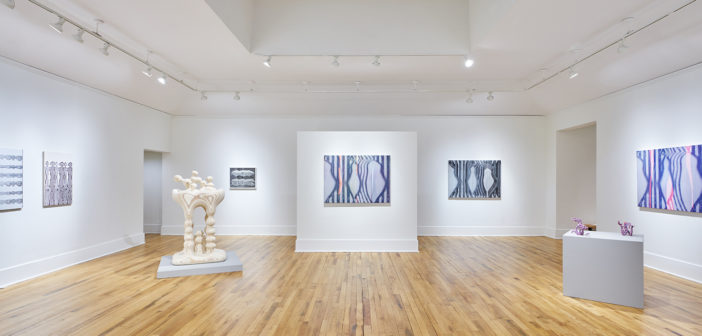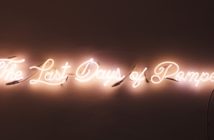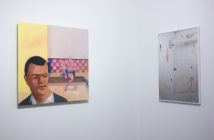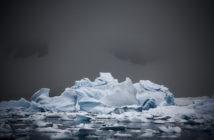With its walls hung with Graham McDougal’s dizzying prints, and pedestals scattered across the floor with Bayne Peterson’s undulating sculptures perched atop them, Providence College’s Hunt-Cavanaugh Gallery takes on the feeling of a television set between channels, a physical manifestation of the vibrating static and whirring buzz. With the exception of a pair of large knot-shaped sculptures and a print depicting a monochrome gallery space, the works in A Dialogue on Distortion, curated by Jamilee Lacy, are all abstract. The linear compositions of McDougal’s prints are mirrored in the plywood from which Peterson has carved his amorphous sculptures. McDougal’s layered digital and screen prints and wood blacks remind me of the refraction that happens when you take a digital photo of a computer screen, the image distorted with water stain-like pixelation. Peterson’s sculptures share this quality. They seem to be organic forms created by digital means as if he had taken a 3D scan of a lava lamp.
Both artists seem interested in the division between the digital and the handmade. McDougal’s work has elements of digital processes layered under manual processes. Like silkscreen of a digital print, or a screen print (a process that now leans heavily on digital tools) added to with gesso and varnish, materials more often associated with traditional painting techniques. His works sometimes become monochromatic in the layers of bright color. It reminds me of when I was a kid and I would sit so close to the TV that I could see the red, green, and blue bars that made up all the colors, even the black and white of old movies.
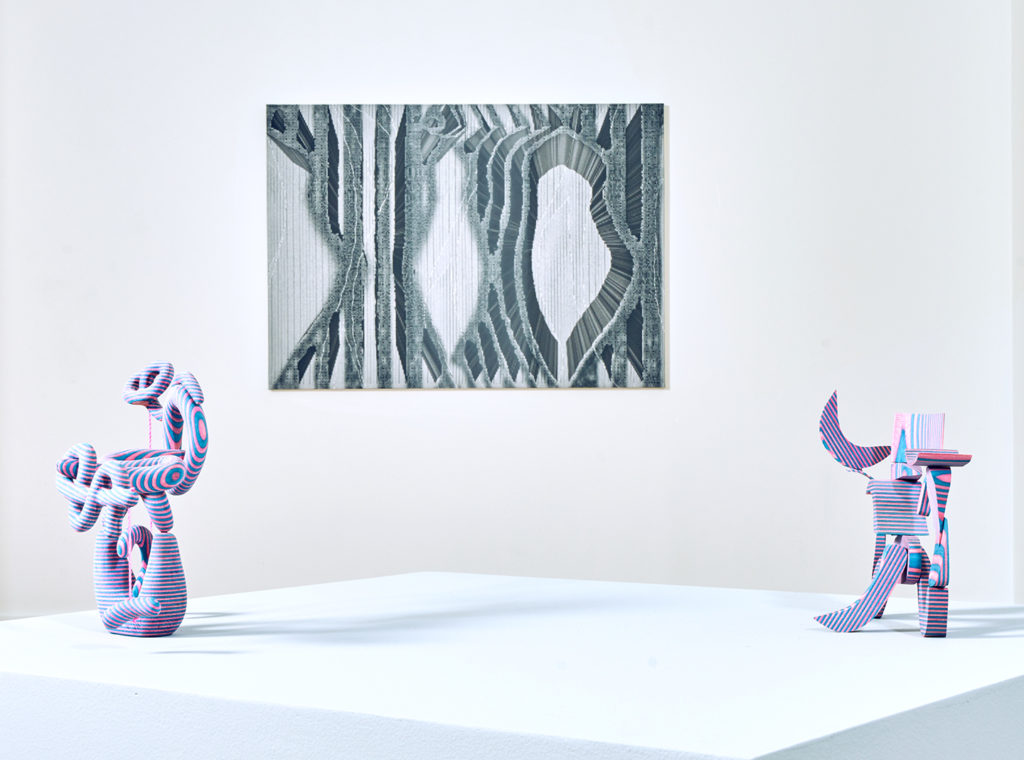
A Dialogue on Distortion installation view. Courtesy of Providence College Galleries.
Peterson’s process involves dipping back and forth between digital and physical techniques: a hand-carved sculpture is scanned, manipulated, printed in gypsum like a tiny architectural study, and then recreated through hours of carving and sanding. Using this process it feels like he could continue a life’s work from one sculpture and it’s digital file. Peterson’s sculptures, like digital files, have an uncanny relationship to scale. As a computer file, any object, no matter how large or small, is confined to the borders of the screen, creating an artificial perception of size. In the gallery, the physical objects do something oddly similar. From the almost human-sized wood carving made entirely of laminated plywood to a set of pink and blue plywood sculptures standing mere inches tall atop a large grey pedestal, they all feel like their scale will be determined at some later date as if he could edit their data and adjust them at will.
The concept of distortion is one that goes hand in hand with technology, electronics, and digital methodologies. The two artists have harnessed the aesthetic side effects that occur when technology is tinkered with or simply doesn’t work as intended. But, before there were computers or Xerox machines or even radio static, there were mathematics and fractals, the kinds of tools once employed by Bridget Riley and other Op Art masters. Riley’s jittering and undulating yet crisp, clean lines and were made before computer programs were accessible to creative consumers. Fittingly, it is now that these kinds of optical anomalies are an aspect of our daily lives that artists like McDougal and Peterson no longer have to strive to make clean lines in order to achieve similar visual effects. Instead, they are reintroducing the artist’s hand, uploading it, printing it back out and recreating it again in both digital and manual forms. The results are like those Magic Eye games that require you to cross your eyes, look close while slowly backing the picture away. When you uncross your eyes the image ups forward. The digital is only made clear through human processes and the biological structure of the optic nerve.
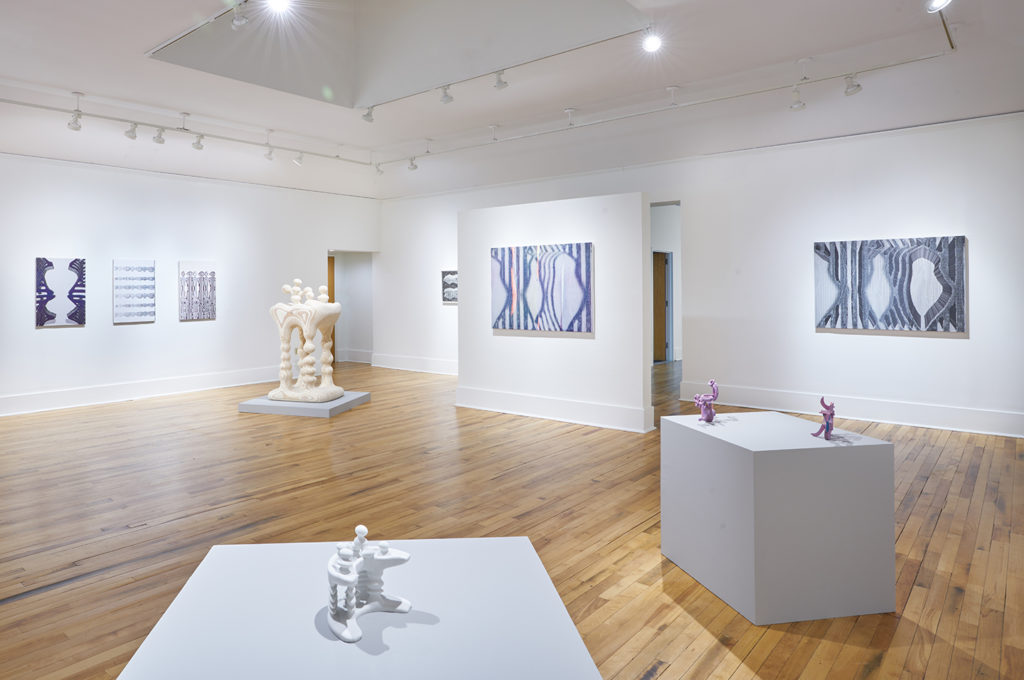
A Dialogue on Distortion installation view. Courtesy of Providence College Galleries.
A Dialogue on Distortion: Graham McDougal and Bayne Peterson is on view now until February 24th with a public reception on February 15th.

